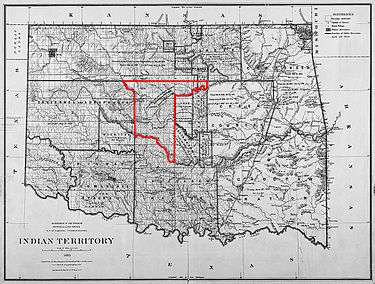Boomers (Oklahoma settlers)

Boomers is the name given to settlers in the Southern United States who attempted to enter the Unassigned Lands in what is now the state of Oklahoma in 1879, prior to President Grover Cleveland opening them to settlement by signing the Indian Appropriations Act of 1889 on March 2, 1889.[1] Boomers preceded by a decade the Sooners, settlers who entered the Unassigned Lands just prior to the April 22, 1889 official opening.
The term "Boomer," in relation to Oklahoma, refers to participants in the "Boomer Movement." These participants were white settlers who believed the Unassigned Lands were public property and open to anyone for settlement, not just Indian tribes. Their belief was based on a clause in the Homestead Act of 1862 which said that any settler could claim 160 acres (0.65 km2) of "public land."[2] Some Boomers entered the Unassigned Lands and were removed more than once by the United States Army.[3] Charles C. Carpenter was the earliest leader of the Boomer movement, but was eventually succeeded by David L. Payne. Payne helped grow the movement by founding the Southwestern Colonization Company, which served to organize the movement. After his death, Payne was succeeded by William L. Couch.[4]
After its founding in 1890, the University of Oklahoma adopted "Boomers" as the nickname of their football team, after having first tried "Rough Riders." In 1908, the name was changed to "Sooners", the current team name.
References
- ↑ Rister, Carl Coke (1942). Land Hunger, David L. Payne and the Oklahoma Boomers. Norman, Oklahoma: University of Oklahoma Press.
- ↑ "The State of Oklahoma". Netstate.com. Retrieved 2007-05-22.
- ↑ Rister (1942).
- ↑ Lovegrove, Michael W. (2009). "Couch, William Lewis (1850–1890)". Encyclopedia of Oklahoma History and Culture (online ed.). Oklahoma Historical Society.
External links
- Hoig, Stan (2009). "Boomer Movement". Encyclopedia of Oklahoma History and Culture. Oklahoma Historical Society.
- Oklahoma Digital Maps: Digital Collections of Oklahoma and Indian Territory